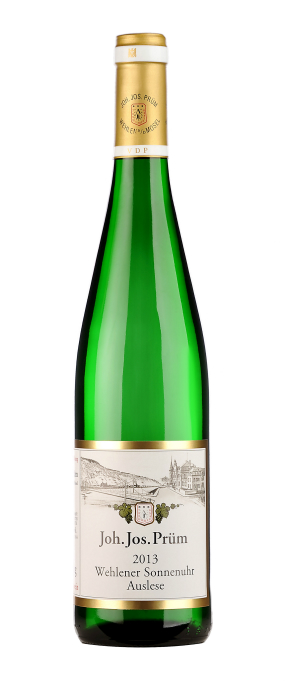Joh. Jos. Prüm: The Royalty in Mosel Riesling
 For any fan of riesling, the mention of Germany’s Mosel region could be the start of a lengthy conversation on its prized riesling, and rest assured that the name of Weingut Joh. Jos. Prüm will pop out every now and then, with the same kind of revere reserved only for Royalty.
For any fan of riesling, the mention of Germany’s Mosel region could be the start of a lengthy conversation on its prized riesling, and rest assured that the name of Weingut Joh. Jos. Prüm will pop out every now and then, with the same kind of revere reserved only for Royalty.
Today, Katharina Prüm, a lawyer-turned-winemaker and great granddaughter of the estate’s founder Johann Josef Prüm, has been helming the estate since 2003, producing powerful, elegant, fruity and off-dry Rieslings that also possess amazing longevity as James calls its wines “the benchmark for riesling in terms of purity and precision”.
Some of James’ greatest Riesling experiences were with some old bottles of J.J. Prüm. He once tasted Auselses from the 1940s with Katharina’s father Manfred Prüm in the 1990s. Up till today, James still has a bottle dated back to 1985 in his cellar!
Located in middle Mosel Valley, the coolest winegrowing region in Europe where temperature in July averages around 18 degrees Celsius. Most of the estate’s grapes are grown on southern-facing steep slopes of up to 65 degrees, which helps the grapes to maximize sufficient sunshine for the ripening process. “We are in a deep valley with very steep slopes, which more or less face south. We need to catch enough sunshine to reach ripeness level in a cooler region,” Katharina explained.
The harvesting time of the riesling grape is normally from October to the following January starting from Kabinnett, Spätlese, Auslese to much coveted Beerenauslese (BA) and Trockenbeerenauslese (TBA) in order of ripeness and pricing based on Germany’s Prädikatswein system.
Under her father Manfred and now her watch, for the past 25 years or so, the estate hasn’t had a bad vintage yet, Katharina said. Some of its TBA, ultra sweet desert wines, and “Golden Cap” Auslese, equivalent of Auslese Reserve, fetched more than $5,000 a bottle at auctions, thanks to their rarity and exceptional quality.

But the chances of producing TBA are slim, the winemaker admitted. “For the BA, TBA, if we are able to produce them at all – because it’s not like every year we can produce that – It all depends on nature. They are produced with botrytis like sauternes with fungus. It penetrates the grape skin and evaporates the water. You can imagine pressing raisins, not a lot of water will come out. That’s why they are very rare,” she explained.
Most of the time, the estate produces more commercially accessible Kabinnett, Spätlese and Auslese. The estate’s new release, its 2013 vintage, however, by any definition is a year of Auslese, due to late harvesting. The year was marked by some adverse climatic conditions such as a relatively cool summer and late rain falls before harvest that resulted in long vegetation and late flowering. As a result, the harvest was pushed back to late October, the winemaker revealed, causing the estate to skip Kabinnett and Spätlese.
But the silver lining was the quality of its Auslese was exceptional. “The good thing is around the 20th of October, we had a very warm period, which helped a lot to achieve the final ripening. So we started on October 23rd, and by that time we had the right ripeness, we didn’t only have this regular ripeness, but a lot of very concentrated wines with lots of tension,” she explained. The 2013 “Golden Cap” Auslese, in particular, in the winemaker’s words is “truly superb” characterized by high concentration and high acidity, which is expected to attract some interest among collectors.
This year, making her third visit to Hong Kong with the new releases, Katharina was quite impressed with Hong Kong market’s development where people’s interest in wine have outgrown Bordeaux to include Burgundy and a broader scope of white wines. “We want to grow the Asian market, there is tremendous potential. It just needs bit more education until people know the variety,” she said.
Confident that Mosel riesling pairs great with Asian food, even with spicy Sichuan dishes, thanks to its sweetness and low alcohol level, which normally averages between 7% and 9.5%, Katharina said the wine is really approachable. “Low alcohol level is also one of the characteristics. You can drink it quite a lot and you can start from breakfast,” she said half-jokingly over a glass of water.
You can also watch the video interview below where Katharina elaborated on the winery’s history, its wines’ famed ageing process and her observation on the Hong Kong market.
Stay tuned for upcoming ratings of J.J. Prüm’s new releases after James tasted the wines.
– Natalie Wang